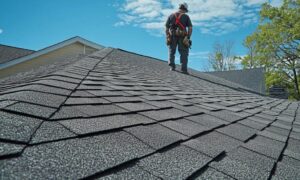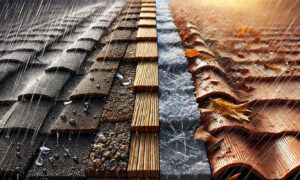Maintaining the integrity of your roof is crucial for the safety and longevity of your home. Experts agree that regular inspection and repair are essential to extend the life of your roof and prevent costly damage. The frequency of roof repairs, however, can vary based on a number of factors including the age of the roof, the materials used, and the climate you live in.
It is generally recommended that you have your roof inspected by a professional at least once a year. In areas with severe weather conditions, such as heavy snowfall, strong winds, or hail, more frequent inspections may be necessary. Taking proactive measures after extreme weather events can help identify potential issues before they escalate into major problems.
Minor repairs, such as replacing a few damaged shingles, can often be addressed quickly and help maintain the roof’s overall effectiveness. On the other hand, ignoring small issues can lead to larger defects that may require substantial repair work or even a complete roof replacement. Therefore, staying on top of roof maintenance is a key component in protecting your home investment.
The Importance of Regular Roof Maintenance
Maintaining your roof regularly is essential for ensuring the longevity and integrity of your home. Investing in timely roof repairs, typically recommended twice a year, can identify minor issues before they escalate into costly repairs. During these inspections, you should look for missing or damaged shingles, signs of water damage, and any debris that might have accumulated.
Proactive maintenance not only extends the lifespan of your roof but also reinforces your home’s energy efficiency. A well-maintained roof provides better insulation, keeping your home warmer in the winter and cooler in the summer. This can lead to a reduction in your energy bills.
It is also crucial to consider the impact of seasonal weather conditions on your roof. For instance, before the onset of winter, ensure that your roof is free from leaks and has proper insulation. Conversely, after winter, check for any damage that may have been caused by ice dams or heavy snowfall.
Having your roof repaired as needed can prevent structural damage to your home. Water leaks can compromise wooden beams and walls, resulting in a need for more extensive repairs. By keeping your roof in good condition, you protect the overall structural integrity of your house.
Lastly, regular maintenance affects your roof’s warranty. Many manufacturers’ warranties require documentation of periodic maintenance. Keeping a detailed maintenance record may prove beneficial in the event of a claim. Remember, your diligence in roof care can save you from unexpected financial strains due to emergency repairs.
Determining the Frequency of Roof Repairs
Roof repair frequency depends on various factors including the materials used, the age of the roof, and the climate. This section will guide you on how to anticipate repair needs.
Factors Affecting Repair Frequency
The lifespan of your roof is influenced by several specific variables. Material durability plays a crucial role, with some materials having inherently longer lifespans than others. For example, asphalt shingles typically last between 15 to 30 years, while metal roofing can last up to 50 years or more. Environmental conditions, such as exposure to high winds, hail, and ultraviolet (UV) rays, can increase the need for repairs. Regular maintenance activities, such as cleaning gutters and removing debris, can help extend the life of your roof. Finally, installation quality has a significant impact, as poor initial work can lead to increased repair needs.
Recommended Timelines for Various Roof Types
Each roof type has a different expected longevity and maintenance requirement. Here is a guideline for repairs based on the roof type:
- Asphalt Shingles: Inspect annually and after major storms; repairs typically needed every 15-20 years.
- Wood Shingles: Inspect every 2-3 years; repairs or replacement every 20-25 years.
- Clay or Concrete Tiles: Inspect every 2-3 years; more resilient but may require repairs every 20-30 years.
- Metal Roofing: Inspect every 5 years; repairs are usually minimal due to the durability but might be necessary after 30-50 years.
- Flat Roofs: Inspect at least twice a year; may require repairs every 10-15 years.
These timelines can serve as a general guide, but your specific situation may vary based on the aforementioned factors. Regular inspections will help catch potential issues early, ensuring the longevity of your roof.
Common Signs Your Roof Needs Attention
Identifying the early signs of roof damage can mitigate costly repairs. Familiarize yourself with these key indicators to maintain the integrity of your roof.
Visual Indicators of Damage
When examining your roof, look for missing, cracked, or curled shingles as these suggest deterioration. Stains or moss growth can indicate trapped moisture, which can lead to water damage. Check for rust or wear around metal components such as flashing or vents. Look for uniformity; differences in color or texture might signal past repairs or underlying issues.
Physical Symptoms of Wear and Tear
Indoors, check your attic for beams of light coming through the roof or stains on the insulation, which reveal potential leaks. Feel for drafts that could indicate temperature inconsistencies due to inadequate roofing ventilation. Examine the ceiling and walls for water stains or paint peeling, reflecting possible roof damage. Your roof should be structurally sound, so if there’s a noticeable sagging area, that’s a clear sign of structural issues necessitating urgent professional evaluation.
Professional Roof Inspection and Maintenance
Regular professional inspections are crucial to extending the lifespan of your roof and can prevent minor issues from becoming major expenses.
Benefits of Professional Assessments
When you enlist professional services, you gain access to an expert’s ability to identify problems that are not always visible to the untrained eye. Preventive maintenance can save you money by addressing small repairs before they escalate. For instance, a professional can spot and fix damaged shingles and small leaks promptly, ensuring your home remains protected from the elements. Additionally, they can offer guidance on how to maintain your roof based on its specific material and design.
Choosing a Reliable Roofing Contractor
To ensure your roof receives the best care, it’s essential to choose a contractor with a strong reputation and relevant experience. Start by verifying their licensure and insurance to protect yourself against any liability. Seek out contractors with positive reviews and ask for references to gauge their reliability and quality of work. An optimal contractor is one who not only performs thorough inspections but also provides a comprehensive report detailing the condition of your roof and the necessary steps to address any issues.



































